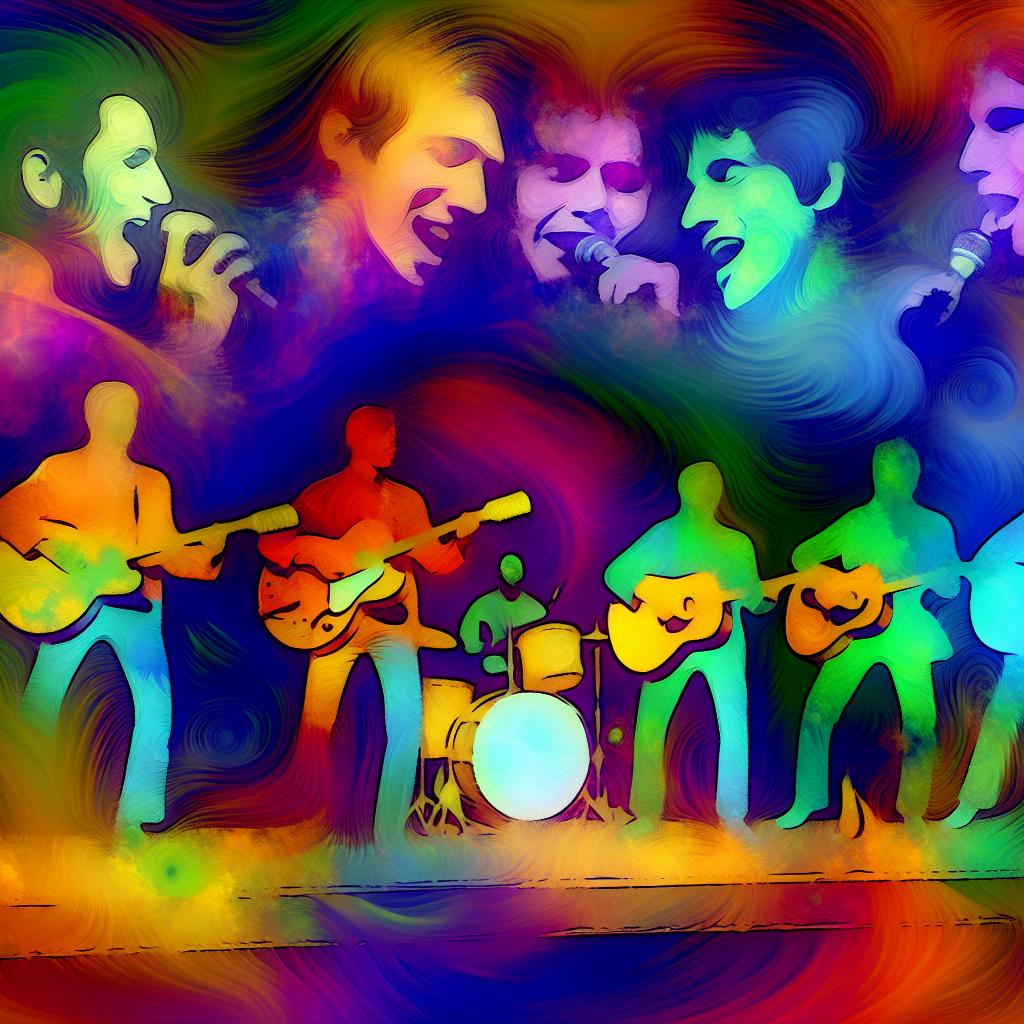The Who and Their Dynamic with Rock Peers
The Who, an iconic British rock band formed in the early 1960s, is often recognized not just for their monumental impact on rock music but also for their interactions with other rock legends. Their relationships span admiration, collaboration, rivalry, and mutual influence, contributing significantly to the rock genre’s tapestry.
The Who and The Rolling Stones
The Who and The Rolling Stones share a long-standing mutual respect, both being contemporaries in the British rock scene. Although they spurred friendly competition, often being compared in terms of musical innovation and stage presence, both bands acknowledged each other’s contributions to rock music. An example of their camaraderie is the 1968 “Rock and Roll Circus,” a concert film organized by The Rolling Stones, in which The Who delivered a memorable performance.
The two bands frequently found themselves crossing paths at various venues and events, fueling a healthy rivalry that often pushed each to new heights. Both groups, while exhibiting distinct styles, encapsulated the evolving dynamics of the 60s and 70s rock movement. This juxtaposition of their styles created an interesting public discourse on the authenticity and innovation present in British rock music during that era, further solidifying their places as musical pioneers.
The Beatles and The Who
Both The Beatles and The Who emerged from the vibrant 1960s British music scene, creating revolutionary music that changed the industry’s landscape. While The Beatles opted for a more pop-oriented approach, The Who was known for its powerful rock sound. Paul McCartney, in particular, expressed admiration for The Who. The Beatles’ influence on The Who’s early work is evident, as The Beatles paved the way for many British rock bands.
The Beatles’ experimentation with recording techniques and their expansion of music’s thematic material undoubtedly inspired The Who, who were simultaneously exploring new ways to express their music’s intensity and thematic scope. This mutual inspiration between the two bands represents a broader narrative of the 1960s: the cross-pollination of musical ideas that enabled the rock genre to grow and diversify rapidly.
The Who and Led Zeppelin
The Who and Led Zeppelin, both front-runners of the hard rock movement, had a complex relationship marked by both respect and rivalry. Jimmy Page, Led Zeppelin’s guitarist, shared an amicable relationship with Pete Townshend of The Who. Both bands showcased a penchant for pushing musical boundaries, but Townshend was known to express initial skepticism of Led Zeppelin’s music while later acknowledging their distinctive approach.
Their interactions, however, went beyond public rivalry, indicating a close observation and appreciation of each other’s craft. The innovative spirit of Led Zeppelin and The Who represented a period in rock where conventions were tested and musical frontiers expanded. The intense and often loud expressions of musical themes by both bands contributed significantly to what would later be known as the hard rock and heavy metal genres.
The Who and the Jimi Hendrix Experience
The performances by The Who and The Jimi Hendrix Experience brought about a significant change in live rock shows, focusing on both musical prowess and theatricality. Hendrix and The Who crossed paths during the 1967 Monterey Pop Festival, where both artists became noted for their theatrical set finales. Despite mutual admiration, there existed a level of professional rivalry, especially in terms of their innovative approach to rock music.
The Who’s theatrical destructive finales and Hendrix’s metaphorical guitar sacrifice on stage became defining moments in rock history, showcasing a shift from traditional performance to experiential live shows. These performances exemplified a new rock ethos, where music and stagecraft were intertwined to offer audiences not just concerts, but a full-blown sensory experience.
The Who’s Enduring Influence
Throughout their career, The Who maintained relationships with their peers characterized by a mixture of respect and competition. Their fierce energy and innovative music established them as one of the pillars of rock music, fostering collaboration and inspiration within the industry.
Their lasting impact is evident through the multitude of artists citing The Who as a primary influence in their music. The band’s approach to themes of youth rebellion, identity, and society resonates with successive generations. The unique interplay of Pete Townshend’s storytelling, Roger Daltrey’s dynamic vocal expressions, John Entwistle’s innovative bass lines, and Keith Moon’s explosive drumming combined to create a sound that was indeed greater than the sum of its parts, which continues to inspire musicians to this day. The legacy of The Who is not only preserved in their recordings but also lives on through live performances and the perpetuation of their music in various media forms.
In conclusion, The Who’s involvement with fellow rock legends underscores an era of musical evolution marked by shared exploration and mutual inspiration. Through camaraderie, competition, and collaboration, these interactions showcase the weaving of a rich tapestry that forms the history of rock music. For those seeking to delve deeper into The Who’s music or explore more about these legendary interactions, visiting official band sites or music archives can provide valuable insight into their incredible journey in the world of rock music.
